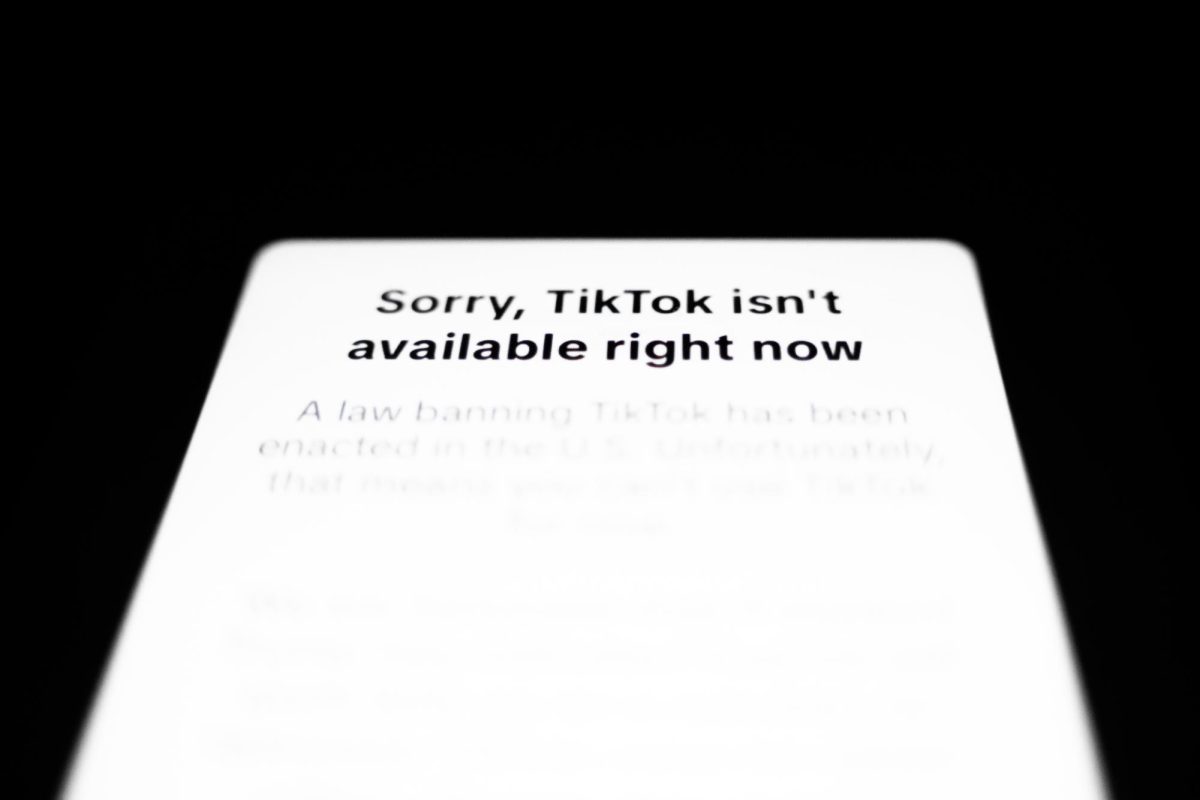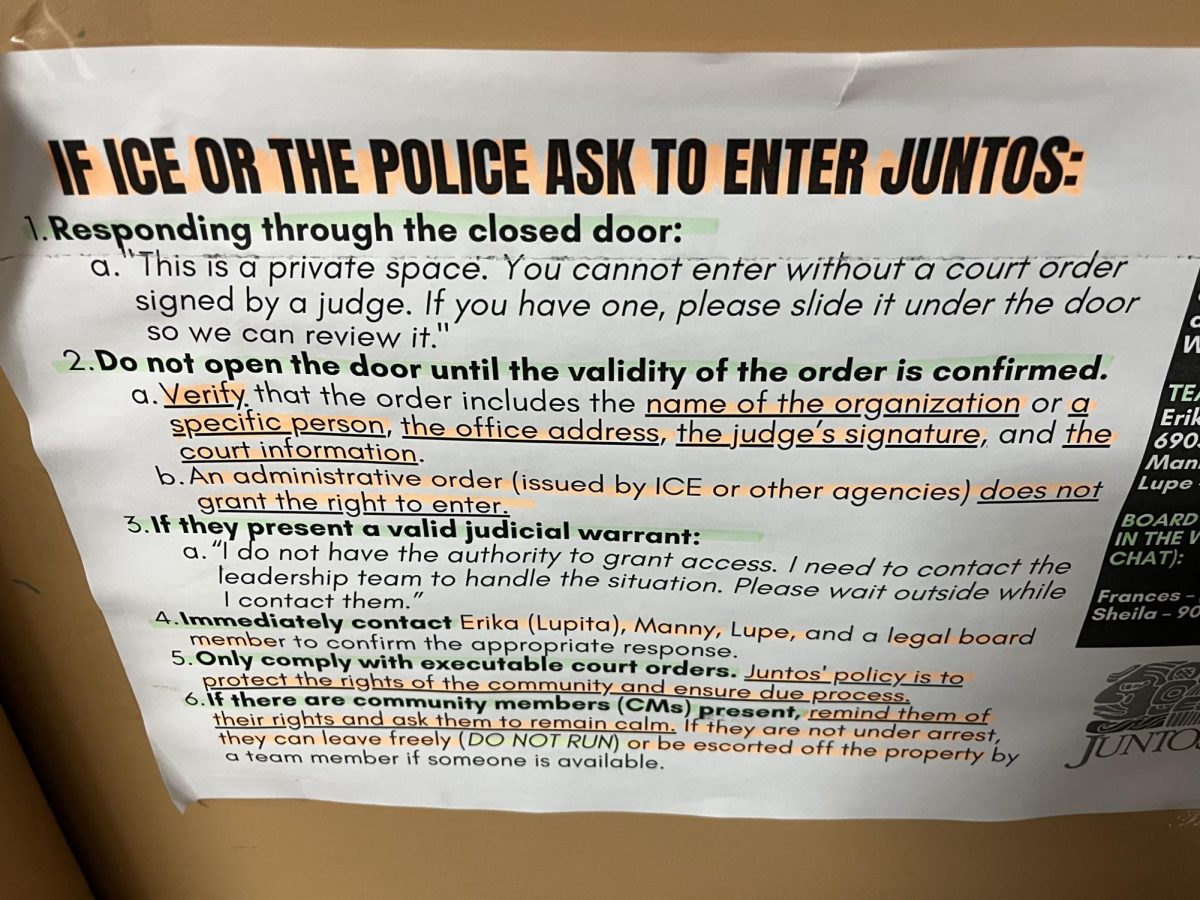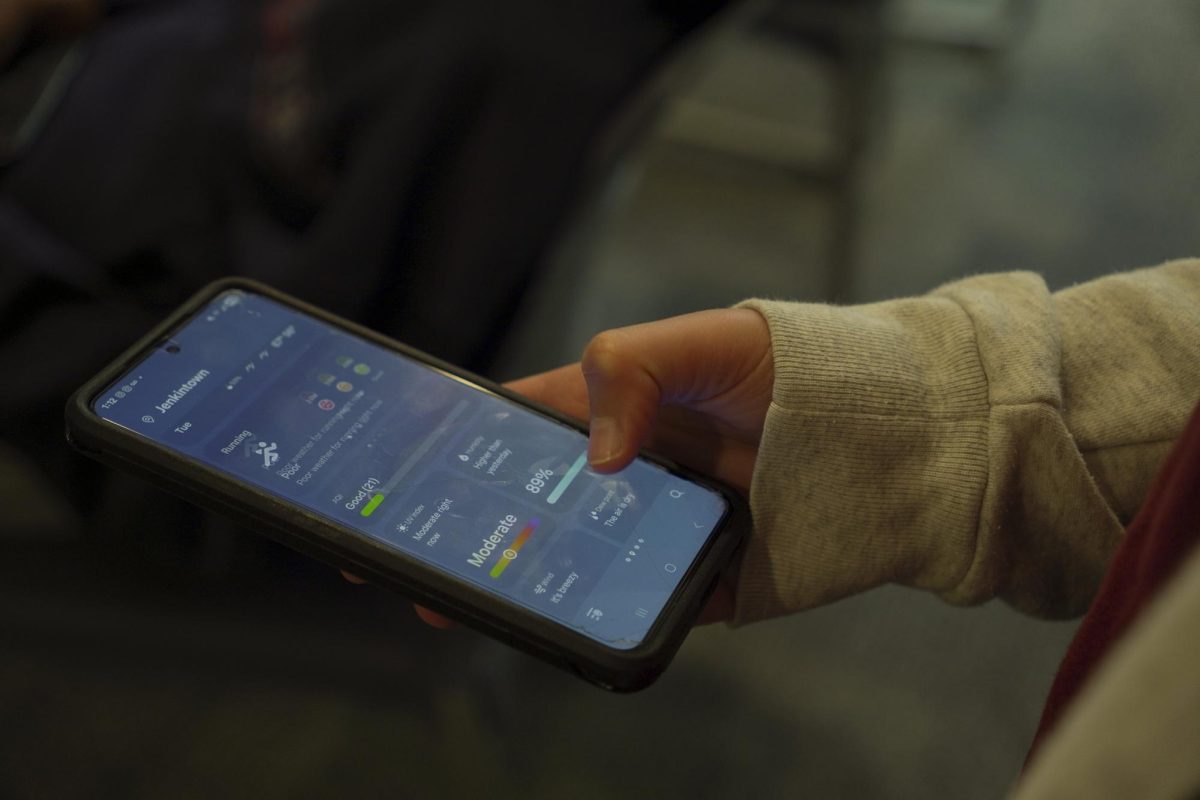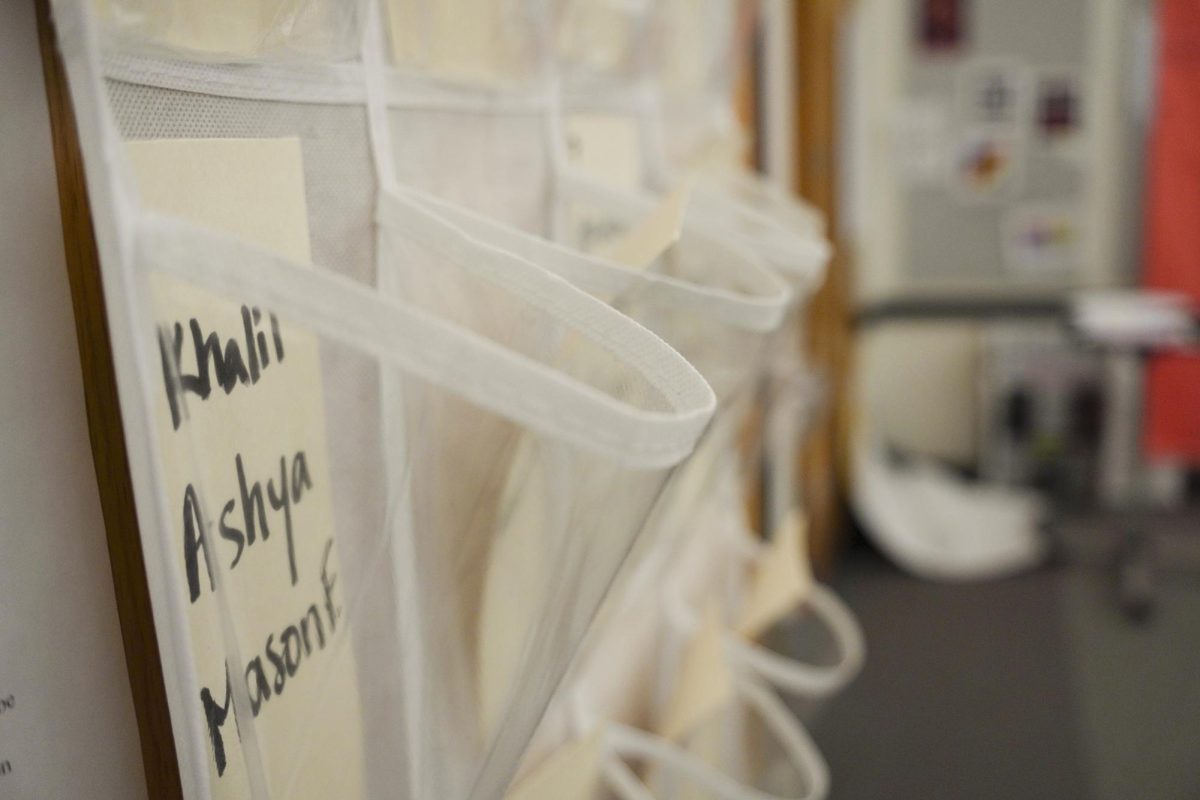Students and teachers alike have debated it in every classroom since the dawn of time—or at least ever since the internet and digital databases were created. Which is better: PDFs or paper?
What at first seems to be a trivial question impacts both the education of students and the world around them. As climate change continues to threaten the state of the environment, the environmental cost of books and computers remains under scrutiny.
Studies have looked at the impact of digital reading versus physical reading, however, there is no overwhelming support for one form or another. One study done by the United Kingdom Literacy Association found that, relative to paper, reading from screens had a negative impact on reading performance. In contrast, a study of undergraduates, performed by the University of Maryland, found that students prefer digital texts and described their performance as better.
There is not a vastly superior method or medium. According to the NCBI, there are individual, family, and school factors that go into determining which way works better for a student’s learning.
Many of the learning benefits from paper comes from hands-on engagement with the text.
Anjali Tremblay ‘26 said that they “generally prefer to have [text] printed out because then I can annotate it.”
However, reading online also provides access to books that students can not find in person.
Tremblay said that “sometimes I’ll read on [their kindle] if [they] can’t find books at the library.”
This seems to be a pattern.
Math teacher Nathan Bridge said that “Canvas, Blackbaud, and Google Classroom are so ubiquitously used in classrooms…it’s much easier to find things.”
Bridge also said “there’s something about having a piece of paper in front of you… I actually still do like a physical copy of things.”
Teachers and students seem to reflect that there is a time and a place for both electronic and physical copies of text.
Environmental Action and Justice (EAJ) co-clerk Vivian deGuzman ‘25 said that “there is a good balance between paper and electronics that a class can strike.”
For many years, people have assumed that printing and reading books is more damaging to the environment, mainly because of deforestation. Around 35% of all harvested trees go to paper production, and the removal of so many trees causes mass environmental distress. In addition, there is an environmental cost of ink and discarded ink cartridges.
However, more recently, people are being made aware of the harmful effects of their electronics on the environment. In 2010, the New York Times put out an article looking at the costs of e-readers.
The fossil fuels produced by manufacturing e-readers are 100 times more than the fossil fuels produced by manufacturing books. It takes 40-50 books read on an e-reader to offset the amount of carbon emissions caused by the manufacturing process.
Despite the environmental impact of manufacturing, reading online for 10 minutes is more environmentally friendly, in regard to carbon emissions. A study published by the KTC Center for Sustainable Communications looked at exactly this.
They found that print would be more efficient if one were to spend 30 minutes or more reading. Any less than this, and reading digitally would be the greener option.
Toni Vahlsing, Director of Libraries, said “We have to have a balance, because we are an educational institution, our first job is to educate. But also as a Quaker school, we are all stewards to the environment.”
This is an issue that Abington Friends is still learning to navigate, and it is up to each and every member of the community to make a conscious choice about which is best for their education, while keeping sustainability in mind.
Perhaps instead of buying an e-reader, using a device you already have to download Kindle or other digital libraries. For the realm of printed media, mindfulness for the amount of paper we consume will help keep our forests intact.


























Elise C • Dec 12, 2024 at 1:43 pm
I agree that there are pros and cons in both physical copies and digital copies of literature. I feel like overall there should be a digital library that has every book for the books you cannot find in your local library that can be read for free. In my classes, I feel like technology (our laptops) has been a huge advantage. I can only imagine the weight of all my supplies if everything I had was physical and not digital. While this is true, I still use lots of handheld paper copies as I feel that I can focus more. When it comes to essays though, I do enjoy a digital copy so I can edit however I’d like without having to worry about eraser marks and neat handwriting. Overall, physical and digital copies have their pros and cons and I feel like the best way to learn is by balancing them.
Logan • Dec 12, 2024 at 1:18 pm
I agree that there is a time and place for each thing because when it comes to reading, I personally like to have a hard copy in front of me because I feel that reading online gives too many distractions, for example ads if you’re reading off a website. However, I like the organization and resources that reading online can give you, overall I think there are pros and cons to both printed and digital media.
Roger • Dec 12, 2024 at 8:31 am
Reading is a very important part of my life yet I haven’t given much thought to the differences between reading on paper or digitally. For me, reading digitally has been extremely helpful, allowing me to access resources that I wasn’t able to find as well as being easy to use. Reading online, however, has had a major downside for me. I get distracted easily when I am online so my reading is a lot slower and careful. I think that like many other issues, this is another tough balance to figure out and will be specific to every person.
Eli H. • Dec 8, 2024 at 7:26 pm
I think that it is really interesting that whether digital text is better or physical text is better comes down to personal preference. I have never really thought about the fact that for different amounts of reading, reading digitally is better, and for other amounts of reading, reading reading physically is better. I agree that there is a balance that a class can find between paper handouts and PDFs or websites. I don’t think that a teacher should give out more than three paper packets per class, for classwork and homework combined. I appreciate the amount of interviews in the article.
Timmy Ma • Dec 4, 2024 at 9:55 pm
I personally prefer to use paper documents compared to digital documents. Firstly, I prefer hard copy versions of English/History class texts. I do not get distracted as easily while reading the text so it is more efficient to work on a hard copy than digitally. Another reason is that when you are reading a physical book, you can see the pages stacked up in your left hand as you finish the text. I love this feeling of accomplishment whenever I finish a text and this is not possible digitally. For math, it is easier to jot down notes and simple calculations. This is especially true when there are fractions or exponents involved. However, I do use online tools for support like graphing calculators and Wolfram Alpha for complicated integrals or derivatives. I believe that the best way to learn is dependent on the person as well as the material you are learning. After all, the objective is to learn, and any path to accomplish that goal is valid.
Daniel • Dec 3, 2024 at 12:47 pm
For me, this all depends on what class I am taking. Though I agree with Nate on the fact that canvas, blackbaud, etc, make material easier to organize and find, generally I would prefer material to be printed out on paper instead of being on a screen. In classes where a lot of reading occurs like history or English, I find that I can get a lot more done when it is printed out. I’m more inclined to read all the text for some reason; maybe since we get a break from screens or because we can lie down comfortably and read with the paper in hand. For my STEM classes as well, I’m more inclined to finish my work if we have work packets instead of copying down from an online textbook. Erin, my calc teacher, provides us with packets for every class and it makes learning so much easier for me. Instead of focusing on writing down material, I can focus on listening and trying to understand what she is trying to explain to me.
Ava Cole • Dec 1, 2024 at 11:15 pm
This is something that has been debated in many of my history classes since reading and annotating historical documents online is often a challenge. I wonder what would happen if students or classes had a limit to the amount of material they could print for each assignment. Perhaps then we could strike the balance Deguzman was talking about. Or maybe it would pose a serious equity problem to those with various learning styles. I personally love for everything to be digital but that is because I have access to programs and devices that make reading digitally similar to reading on paper. Perhaps protecting the environment comes at the cost of inclusive learning.
Harrrison • Dec 1, 2024 at 9:42 pm
I think there can be a healthy balance between papers and PDFs. In my opinion, paper copies help me learn better, but many times teachers hand out printouts that are only used for a short span of time. In relation to AFS, I believe teachers should make the decision whether providing a paper is worth the resources depleted. I also think a PDF should always be shared because it takes little to no work to offer that resource to students as well. Another solution could be students determining whether they want physical copies prior to the teachers printing it out. I know some students prefer only to use PDFs and by not printing out for those certain students It would greatly limit our depletion of paper.
Solomon • Dec 1, 2024 at 11:30 am
I don’t have a decisive stance on the article’s argument. I think printed media/material and electronic media are helpful in a learning environment in different ways. From an environmental stewardship standpoint it seems like they both have their disadvantages and advantages depending on the ways they are used. Generally, I think it is important to be conscious of the environmental impact of our choice to use physical paper or digital media. I found the argument about offsetting carbon emissions of e-readers in addition to the argument about how reading longer portions in print is greener vs. how reading shorter portions digitally is greener to be convincing.
Student • Nov 30, 2024 at 11:12 am
I definitely prefer reading physical copies to electronic ones. I can annotate on paper, which I find important for comprehension and engagement, and I get a break from staring at a screen which often hurts my head. I’ve never enjoyed reading long PDFs on my computer and I usually have to reread paragraphs multiple times in order to fully comprehend them, an issue I don’t have when reading a physical copy. While my preferred method of writing long essays has adapted to typing on my laptop, I think that actually reading something is meant to be an experience separate from an electronic screen.
Drew Shenkman • Nov 28, 2024 at 12:09 pm
Although I would not call myself an avid reader, I find it much easier to read on paper than I do on a computer. This is mainly due to the eye strain that screens cause me. Still, I prefer to complete essays and other larger assignments online as it is easier to manage the different parts of the assignment and I can do work while sitting down on the couch instead of on a chair at the table with my hand cramping. Math, for me, will always be easier on paper. I know that it is possible to type out math on a computer, but it is tedious and time-consuming. Despite the ecological benefits of using a computer instead of paper, I would not be successful in school without paper. I just do not see a scenario where school is completely devoid of paper and exclusively online.
Mia • Nov 26, 2024 at 12:18 am
I agree with Anjali on how I prefer to have the text printed out so I can annotate it. But when it comes to things that aren’t available at the library, or text that is not as challenging or necessary to read closely, I totally agree that having it online is much easier. Also reading text that’s in much larger of a quantity, because of the fact that printing or having large pieces of text in person can take up so much space and be almost too overwhelming, means that having it online is just better for peace of mind. Finding key passages, or sometimes, the option to have the text read aloud to you is greatly helpful, all tools that are found when reading text online. It all depends on the person!
Henry Goldstein • Nov 25, 2024 at 12:52 pm
Even though reading things on a computer is more efficient, doesn’t use paper, and is more modern, I think that doing anything on paper helps you learn and comprehend better, even if it takes more resources to do so. In my experience, I am able to process information on paper a lot better than on a computer. I am more likely to take better notes while reading something on paper, and it also helps that I can annotate the paper as I read. On a computer, I am tempted to just skim through the readings and not take notes on it, which is not good for my learning and comprehension.